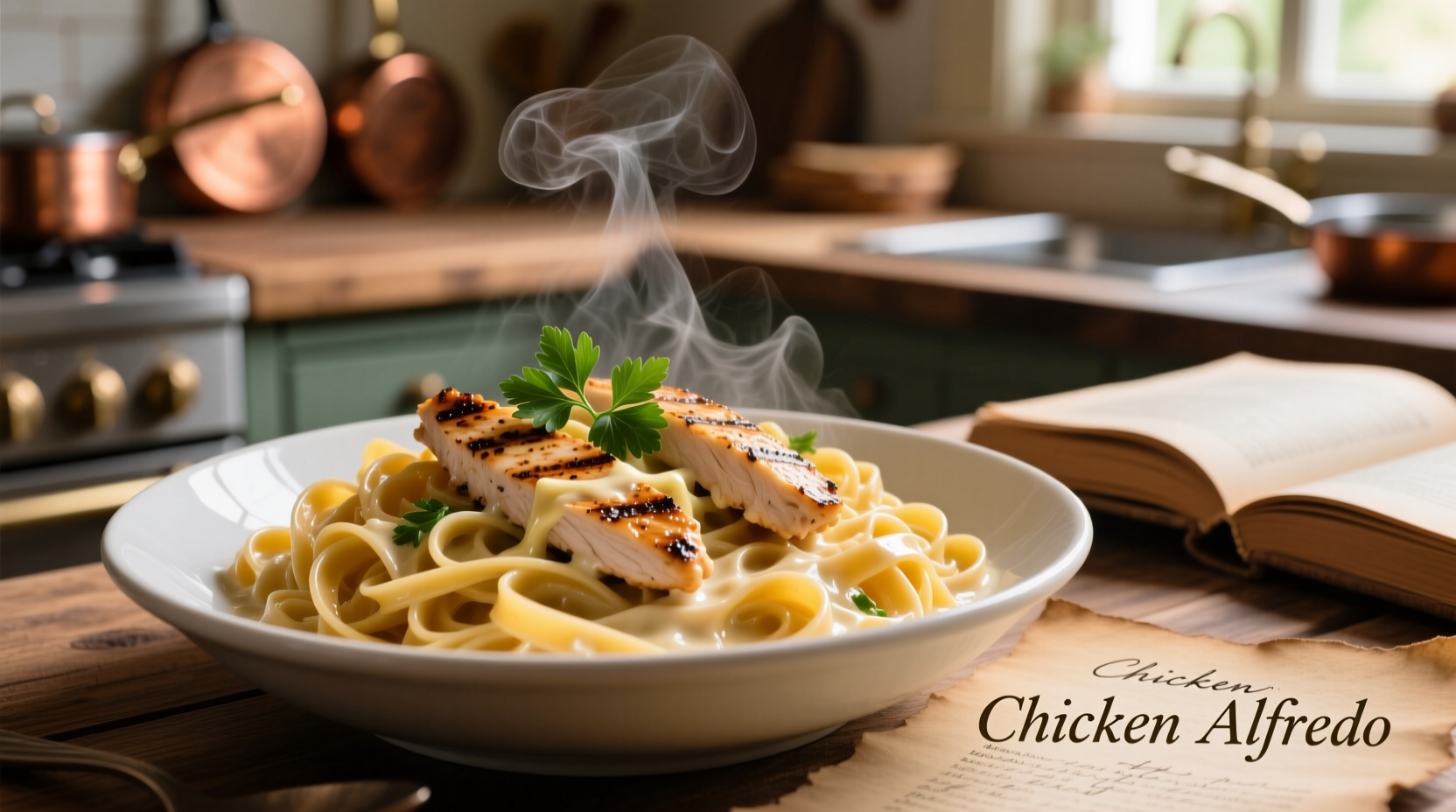Learn how to cook chicken alfredo pasta perfectly with this step-by-step recipe that yields creamy, restaurant-quality results every time. The key is using fresh ingredients, proper emulsification techniques, and cooking the chicken to the USDA-recommended 165°F internal temperature for safety and tenderness.
Your Complete Guide to Making Chicken Alfredo Pasta at Home
Nothing beats the rich, creamy comfort of homemade chicken alfredo pasta. Unlike store-bought versions that often contain stabilizers and preservatives, making it from scratch lets you control the quality and richness of your sauce. In just 30 minutes, you can create a dish that rivals your favorite Italian restaurant—without the $25 price tag.
| Ingredient | Key Function | Professional Tip |
|---|---|---|
| Freshly grated Parmesan | Creates smooth emulsion | Avoid pre-grated cheese (contains anti-caking agents that cause graininess) |
| Unsalted butter | Base for roux | Use European-style butter (82% fat) for richer flavor |
| Heavy cream | Sauce body | Never boil—simmer gently to prevent curdling |
| Boneless chicken breasts | Protein component | Pound to even 1-inch thickness for uniform cooking |
Why This Recipe Works: The Science Behind Perfect Alfredo
Traditional alfredo sauce relies on the emulsification of butter, cream, and cheese. The calcium in freshly grated Parmesan binds with the fat molecules, creating that signature velvety texture. Pre-grated cheeses contain cellulose to prevent clumping, which disrupts this emulsification process—that's why your homemade version will always outperform packaged alternatives.
Essential Equipment Checklist
- 12-inch heavy-bottomed skillet (for even heat distribution)
- Instant-read thermometer (critical for perfect chicken)
- Microplane grater (for ultra-fine cheese)
- Whisk (balloon style for maximum aeration)
- Pasta pot with colander
Step-by-Step Cooking Process
Phase 1: Prepare Your Components (10 minutes)
- Cook pasta: Boil 12 oz fettuccine in well-salted water until al dente (1 minute less than package instructions). Reserve 1 cup pasta water before draining.
- Prepare chicken: Season 2 boneless breasts with salt, pepper, and garlic powder. Heat 1 tbsp olive oil in skillet over medium-high heat. Cook 5-6 minutes per side until internal temperature reaches 165°F (USDA Food Safety and Inspection Service standard). Rest 5 minutes, then slice.
- Make sauce base: In same skillet, melt 4 tbsp unsalted butter over medium heat. Whisk in 1 cup heavy cream—do not boil.
Phase 2: Create the Signature Sauce (8 minutes)
- Reduce heat to low. Gradually whisk in 1¾ cups freshly grated Parmesan until fully incorporated.
- Add 2 minced garlic cloves and 1 tsp white pepper. Stir constantly for 2 minutes until thickened.
- If sauce is too thick, add reserved pasta water 1 tbsp at a time until desired consistency.
Phase 3: Final Assembly (5 minutes)
- Add drained pasta to skillet, tossing gently to coat.
- Fold in sliced chicken and 2 tbsp chopped fresh parsley.
- Finish with additional Parmesan and black pepper to taste.

Avoid These 3 Common Mistakes
- Using pre-grated cheese: The cellulose coating prevents proper melting, resulting in a grainy sauce.
- Boiling the cream: High heat causes dairy to separate—always maintain a gentle simmer.
- Overcooking pasta: Fettuccine continues cooking in the hot sauce, so undercook slightly during boiling.
Storage and Reheating Guidelines
Store leftovers in an airtight container for up to 3 days. To reheat without breaking the emulsion:
- Add 1-2 tsp milk or cream per serving
- Warm over LOW heat, stirring constantly
- Never microwave directly—the intense heat will cause separation
Historical Context: Alfredo's Evolution
While many believe alfredo originated in ancient Italy, the modern version actually dates to 1914 when Roman restaurateur Alfredo di Lelio created fettuccine al triplo burro (triple butter) for his pregnant wife. American soldiers popularized it post-WWII, but authentic Roman versions contain only butter, Parmesan, and pasta water—no cream. Our recipe bridges tradition with American preferences for richer texture.
Customization Options for Different Diets
- Lighter version: Substitute half the cream with whole milk and use 1% Parmesan
- Gluten-free: Use brown rice fettuccine and ensure all ingredients are certified GF
- Vegan alternative: Try cashew cream base with nutritional yeast (simmer 1 cup soaked cashews + 1 cup water until thickened)
Frequently Asked Questions
Can I make chicken alfredo pasta ahead of time?
Yes, but with precautions. Prepare components separately: cook chicken, make sauce base (without cheese), and undercook pasta. Combine only when serving. The sauce separates if made more than 2 hours ahead—reheat components separately and finish emulsification at serving time.
Why does my alfredo sauce become grainy?
Graininess occurs from three main issues: using pre-grated cheese (contains anti-caking agents), overheating the sauce (causes protein denaturation), or adding cheese too quickly. Always use freshly grated Parmesan, maintain low heat, and incorporate cheese gradually while whisking constantly.
What's the best pasta shape for alfredo?
Fettuccine is traditional because its flat surface holds the creamy sauce exceptionally well. Alternatives include pappardelle (for extra richness) or penne (for baked versions). Avoid delicate shapes like angel hair that can't support the sauce's weight.
How do I fix broken alfredo sauce?
For a separated sauce, remove from heat and whisk in 2 tbsp cold butter. If severely broken, create a new emulsion base: whisk 1 tbsp cornstarch with 2 tbsp cold cream, then gradually incorporate into the sauce while heating gently. Never continue boiling a broken sauce.
Is chicken alfredo pasta safe during pregnancy?
Yes, when prepared properly. Ensure chicken reaches 165°F internal temperature (USDA Food Safety and Inspection Service guidelines) and use pasteurized dairy products. Avoid raw eggs or unpasteurized cheeses sometimes found in similar recipes.











 浙公网安备
33010002000092号
浙公网安备
33010002000092号 浙B2-20120091-4
浙B2-20120091-4